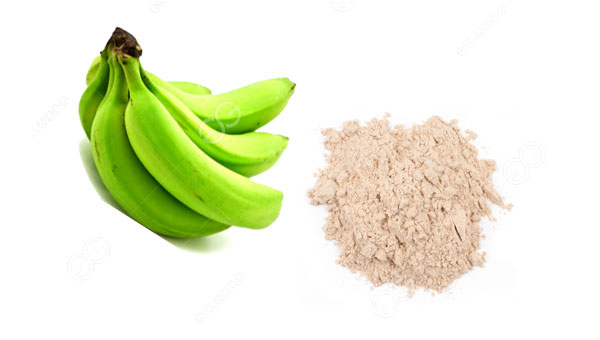Green banana flour has gained popularity in recent years as a versatile and nutritious alternative to traditional flours. Made from unripe bananas, this gluten-free flour is rich in resistant starch, essential nutrients, and offers numerous health benefits. The process of transforming green bananas into flour involves a carefully orchestrated series of steps, often carried out by professional banana flour production lines. In this article, we will explore the journey of how is green banana flour made, highlighting the key stages in a modern and efficient production line.

Harvesting and selection:
The journey begins in the banana plantations, where skilled workers harvest green bananas at the optimum stage. Green bananas are preferred for flour production because they contain higher levels of resistant starch, which is a type of starch that resists digestion and provides various health benefits. Once harvested, the bananas undergo a meticulous selection process to ensure that only the highest quality fruits are used for flour production. This involves sorting based on size, color, and overall condition to eliminate any damaged or overripe bananas.
Peeling and washing:
After selection, the green bananas are transported to the processing facility where they undergo the peeling and washing stage. In a professional banana flour production line, specialized machinery is employed to efficiently peel the bananas, removing the outer skin while preserving the valuable inner fruit. The peeled bananas are then thoroughly washed to remove any impurities, pesticides, or residues. This step is crucial to maintain the purity and quality of the final product.
Drying:
Once cleaned, the peeled bananas move on to the drying stage. In a controlled environment, typically using advanced drying technologies, the bananas are subjected to a carefully monitored process to remove moisture and achieve the desired level of dryness. This step is essential for the preservation of the flour and prevents the growth of mold or bacteria.
Milling and grinding:
The dried bananas are then sent to the milling and grinding section of the production line. High-tech machinery is employed to finely grind the dried bananas into a powder, creating the green banana flour. The milling process ensures uniform particle size and consistency, resulting in a high-quality flour suitable for various culinary applications.
Quality control:
Throughout the entire production line, rigorous quality control measures are implemented to ensure the final product meets strict standards. Technological advancements allow for real-time monitoring of various parameters, such as moisture content, particle size, and color. Any deviations from the established quality criteria trigger immediate corrective actions to maintain the integrity of the flour.
Packaging and distribution:
The final step in the banana flour production line involves packaging the flour into various sizes and formats. Automated packaging machines carefully fill and seal the bags, ensuring the freshness and quality of the product are preserved. Once packaged, the green banana flour is ready for distribution to retailers, food manufacturers, and consumers worldwide.
The journey of green banana flour from harvest to the professional production line involves a combination of agricultural expertise and cutting-edge technology. As consumer interest in alternative flours continues to grow, the meticulous processes employed in the production of green banana flour play a crucial role in delivering a nutritious and versatile product to the market. With sustainability, health benefits, and quality at the forefront, the professional banana flour production line exemplifies the intersection of tradition and innovation in modern food processing.